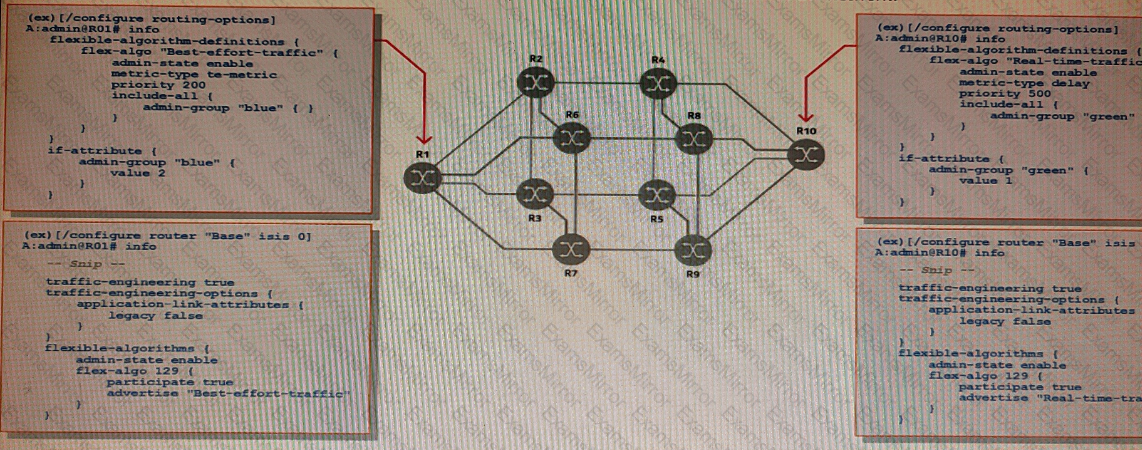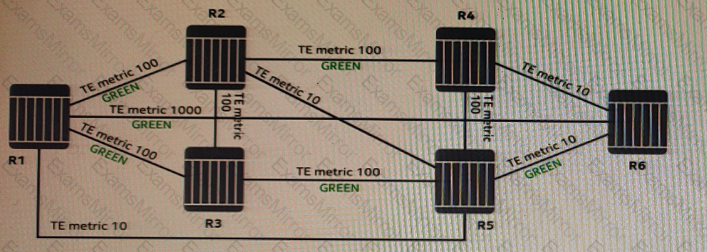Cyber Monday Special Limited Time 70% Discount Offer - Ends in 0d 00h 00m 00s - Coupon code = getmirror
Pass the Nokia Service Routing Architect 4A0-116 Questions and answers with ExamsMirror
Exam 4A0-116 Premium Access
View all detail and faqs for the 4A0-116 exam
499 Students Passed
88% Average Score
96% Same Questions
Which of the following list of SR-TE attributes has to be advertised among routers?
Which of the following statements about a Segment Routing SID is FALSE?
Based on the configuration shown for routers R1 and R10, what valid flex-algo definitions exist in the network?

Examine the exhibit.

An LSP is being configured to start at R1and end at R6 using local CSPF. The LSP has the following constraints. Include admin-group GREEN, use the TE metric and hop-limit 3. What routers will be included in the LSP path?
In which of the following aspects does the configuration of flex-algo LSPs have an advantage over the configuration of SR-TE LSPs?
The exhibit presents packets being transmitted inside an LSP's multi-segment primary path going from router R1 to router R8. The LSP also has a standby secondary path, and Seamless-BFD has been enabled on the primary path. The link between routers R1 and R2 fails, and fast re-route (FRR) is triggered. As a result, router R1 forwards the packets to router R3 and adds the proper FRR encapsulation to reach which router?

Which of the following types of information is considered by a stateless PCE when it processes a new LSP path calculation request?
Based on the exhibit, which of the following statements about fast re-route for flex-algo instance 129 is TRUE?

OSPF is being used for segment routing with traffic-engineering (SR-TE). The traffic-engineering option has been set to "sr-te false". Which of the following statements is TRUE?
Which of the following statements about path definitions is FALSE?
TOP CODES
Top selling exam codes in the certification world, popular, in demand and updated to help you pass on the first try.
